The latest version of Dangerous Liaisons (below; currently streaming on Starz in the US, Prime Video in the UK and Stan in Australia) is a Bridgerton-style (read: steamy scenes and heaving corsets) origin story of the classic French epistolary novel by Pierre Choderlos de Laclos.
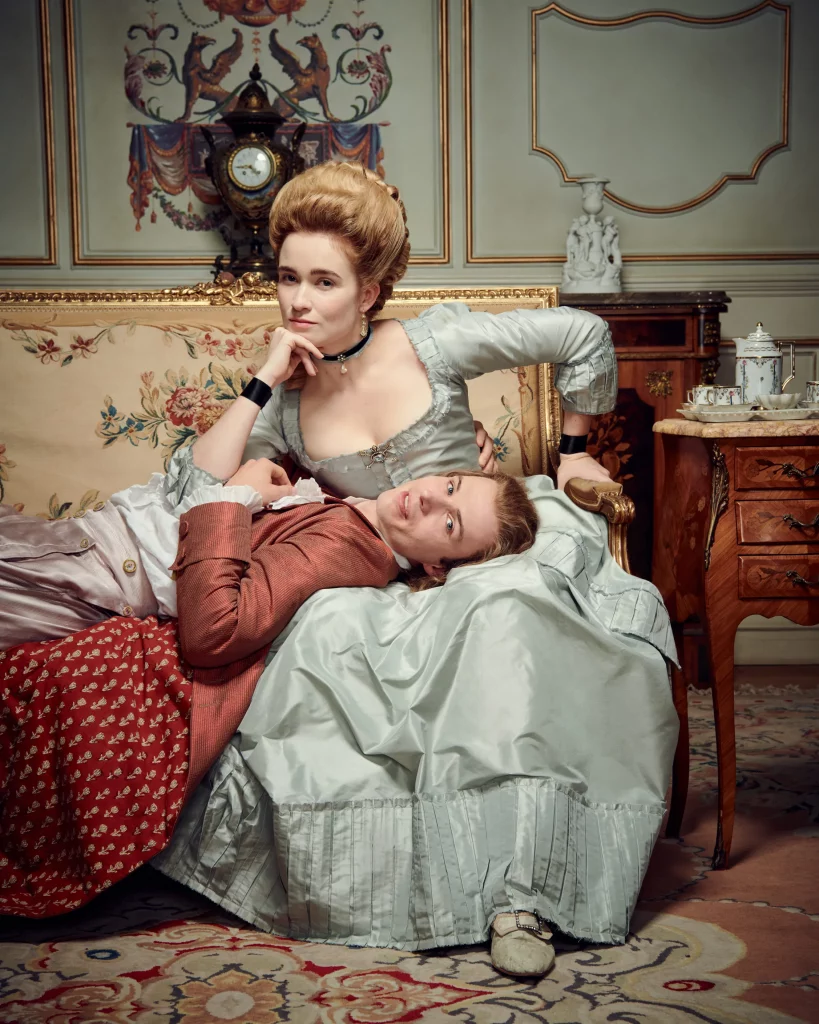
The series, filmed in Prague, is set in Paris of 1782, the year of the book’s release. While the Paris city glimpses come courtesy of CGI, the show still does a good job of evoking the dissolute feel of pre-Revolutionary Paris, in keeping with Laclos’ aim to expose the moral decay of ancien régime France.
It’s hard, however, to beat the 1988 movie, Dangerous Liaisons (below), for sheer decadent deliciousness, killer dialogue (“It’s beyond my control”) and luscious scenery; several scenes of this version were filmed in Paris, although most locations were grand country estates just beyond the city borders.
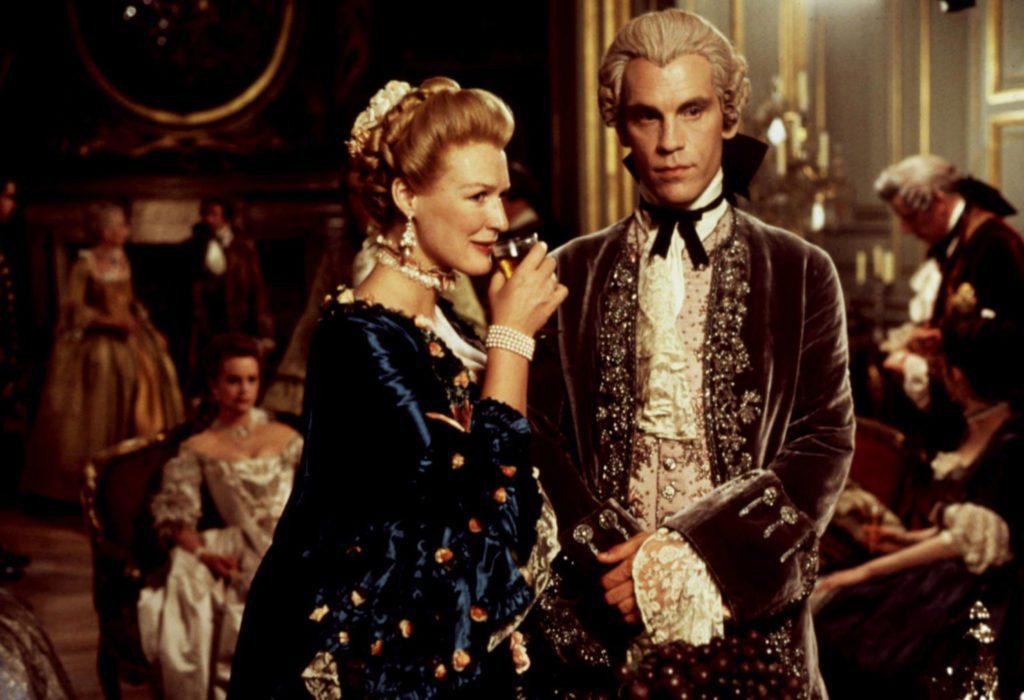
Finding the Paris of Dangerous Liaisons is a somewhat elusive quest. Laclos’ book was very much about Parisians rather than Paris — what they got up to behind closed doors more so than what they did beyond those doors. And this was a private and rarefied world that was mostly demolished by the Revolution, partly due to the depravity Laclos highlighted. So, ‘Paris of Dangerous Liaisons’ is not an obvious walking tour. But it is nevertheless possible to sense that lost world here and there …
Convents & Churches
Convents were plentiful in pre-revolutionary Paris. They provided useful vocations for many women, including pesky unmarriageable ones; they were also where girls from moneyed families were educated or, at the other end of the life spectrum, where women retreated to when widowed — or thrown out of the home by their husbands for such reasons as vengeance or waning interest.
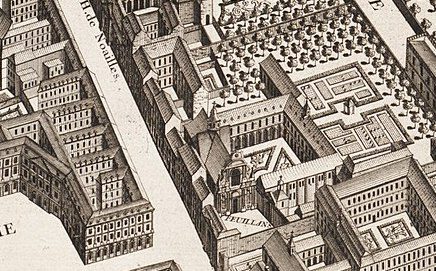
In Dangerous Liaisons, Cécile is initially sheltered in the Couvent des Ursulines (in the fifth arrondissement), while Madame de Tourvel takes refuge in the Couvent des Feuillants (first arrondissement; above) after the Vicomte de Valmont turns on her. Most convents were destroyed during the violent years of the revolution, when religion was as rejected as royalty. But there is some trace left of the Feuillants Convent. At 229-235 Rue Saint-Honoré, you’ll see a few of its former guesthouses, built in the 1760s. And while you can’t view it from the road, just behind here is some of the nave of the convent’s church.
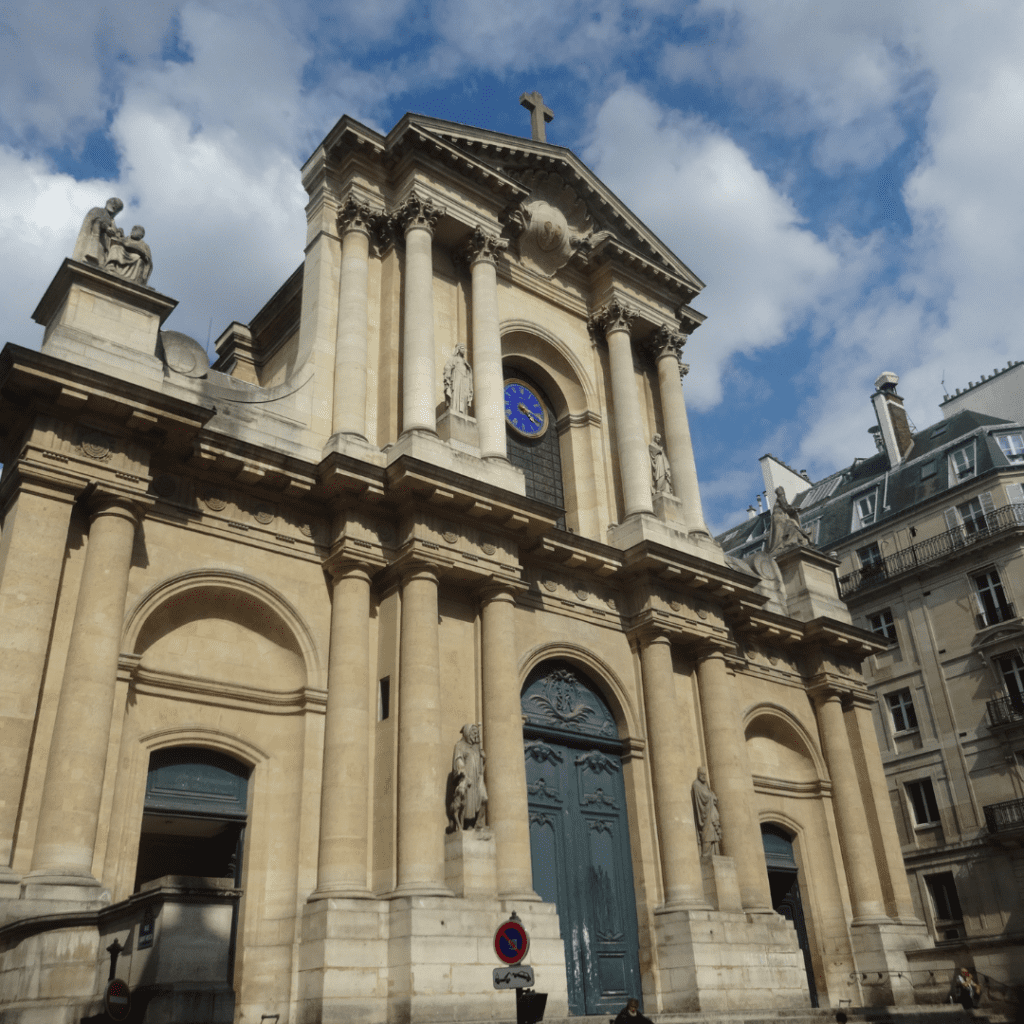
Walk a few blocks east and you’ll come to the church of Saint-Roch (above), which was built from the mid-seventeenth century in late-Baroque-meets-Classical style. Many large city churches did survive the revolution for they doubled as handy storehouses during that period. Saint-Roch, in pre-revolutionary times — due to its proximity to the Louvre, the Palais des Tuileries and the Palais-Royal — was a magnet for aristocrats (for example, the Marquis de Lafayette married here) and, in Dangerous Liaisons, this is the church where Madame de Tourvel collects for the poor. Though much of its interior splendour was wrecked during the Revolution, as occurred in all churches, it’s still worth a wander within; it’s one of Paris’s longest, largest churches, and its series of soaring domes and cupolas, beautifully and shimmeringly painted, is breathtaking.
The Theatre Scene
The theatre was an important scene for Parisian high society, and the setting plays a pivotal role in Dangerous Liasons. It’s where people went to be seen rather than to see, with more action taking place off than on the stage. It was acceptable to talk (and gossip) during performances — which is why the Marquise de Merteuil invites Cécile to her private box so that they can chat (and the Marquise can plot) without fear of eavesdroppers.
Several Paris theatres are mentioned in the book, but sadly there aren’t any left that date from the publication year. The Opéra, around this time, was at the Salle du Palais-Royal, which burnt down in 1781 (below).

The Comédie-Française, like the Opéra de Paris, also moved about a lot; from 1770 to 1782 its home was the Palais des Tuileries (which was destroyed in the Commune fires of 1871).
And the Comédie-Italienne, which is also name-checked as a favourite go-to of the Marquise, was first located just north of Les Halles before, in 1783, moving to the Salle Favart on Place Boieldieu (below) — though the one there today is actually the third Salle Favart, after fire also ravaged the previous two versions (as was so often the case back when wood was the key interior building component).
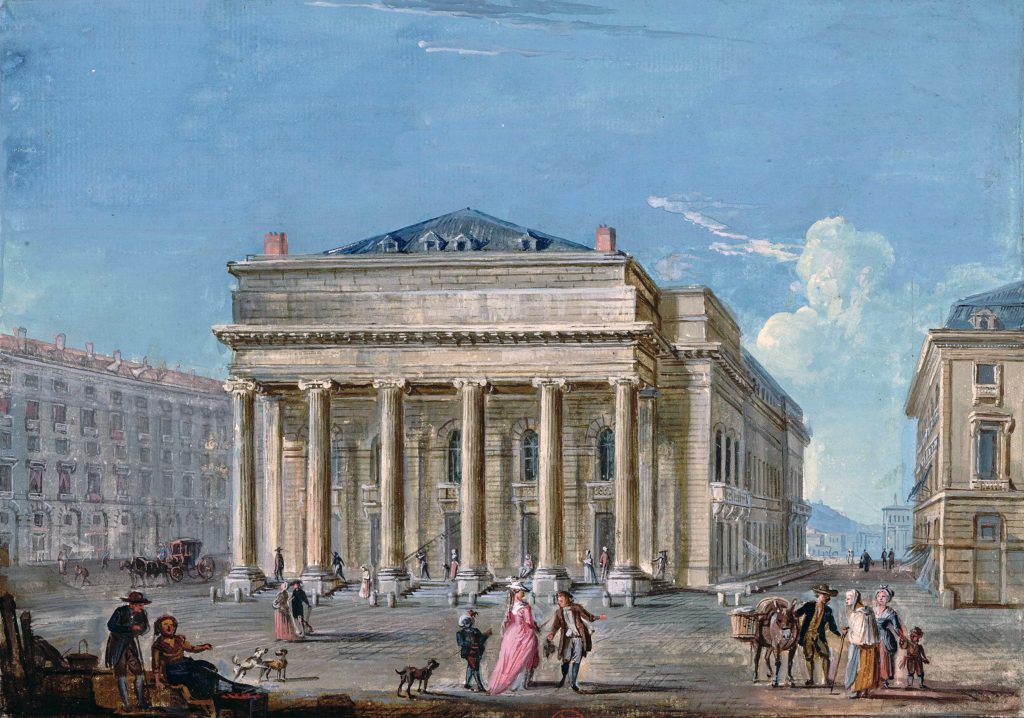
It’s at the Comédie-Italienne that the Marquise discovers she has been unmasked, her evil within exposed; in the movie, she is dramatically booed, transforming her from spectator to star of her own tragedy. This penultimate scene, in the 1988 movie, was filmed at the Théatre Montansier in Versailles, which dates back to 1777.

The oldest theatre in Paris still operating in its original location is the Odéon-Théatre de l’Europe, previously known as the Théatre de l’Odéon (above). The original theatre, Neo-Classical in design, was actually built for the Comédie-Française; launching in 1782, it was inaugurated by Marie Antoinette. This, however, and the subsequent Théatre de l’Odéon were ruined by fires; the one standing on Place de l’Odéon today dates from 1808, though it is a close reconstruction of the original design.
If you understand French, or want to challenge your aural language skills, treat yourself to a night at the Odéon-Théatre de l’Europe, where the red-and-gold glamour of the auditorium makes it an artistic treat off the stage, too.

And if your French is not quite at Molière levels, ne vous inquiétez pas! Saturday shows often come with English surtitles. See the website for more information.
Another glamorous theatre that wouldn’t look out of place in Dangerous Liaisons is the Théatre du Palais-Royal, which opened in 1783, and also drips in the kind of gilded-ruby gorgeousness you want from a Parisian theatre (below).
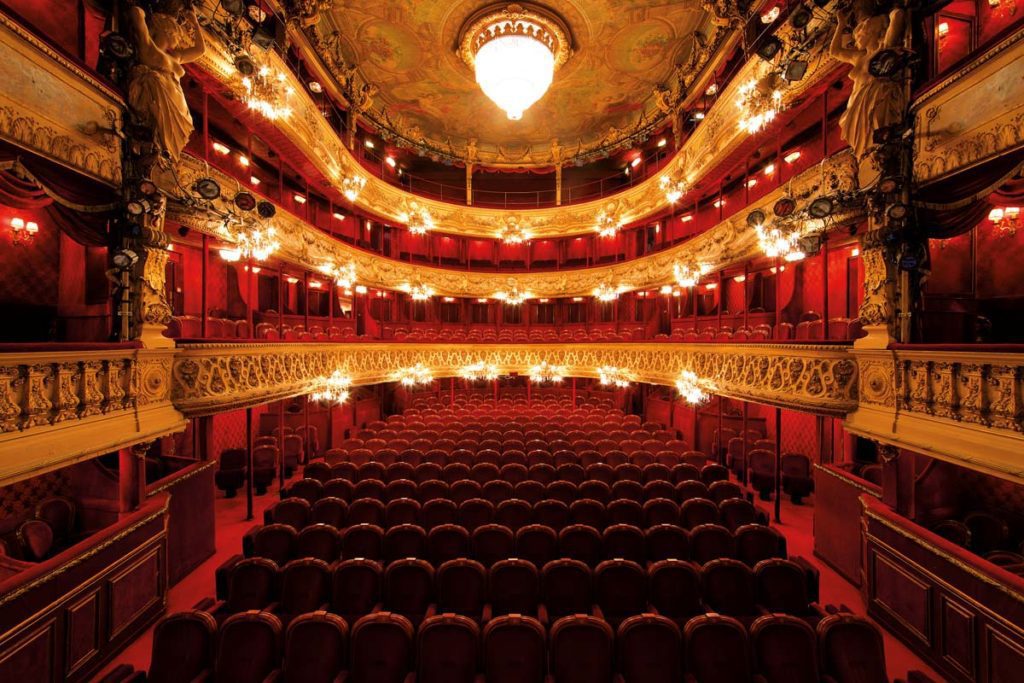
As its name suggests, the theatre is part of the Palais-Royal enclosure, unveiled in 1784 by Louis Philippe II, who redeveloped his palatial gardens as a means of financing his extravagant lifestyle, filling this new party central with shops, restaurants, cafés, gaming dens, billiard halls and dance rooms, while within these walls was a pleasure garden that teemed with Parisians, come to see dance performances and circus acts, and to gossip or flirt in the shady, fragrant groves.

What made the Palais-Royal so exciting was its mix of Parisians. Basically anyone, except the police, could come and carouse. Countesses and courtesans. Royals and revolutionaries …
As a sidenote: this democratic wonderland ended up playing a key role in the Revolution for here, far from the watchful eyes of the authorities, political discussions gathered momentum, morphing into full-blown movements. The sans-culotte Camille Desmoulins gave a particularly impassioned anti-royalty speech from atop a table of a café terrace; two days later the Bastille was stormed, and the rest is l’histoire.
Eighteenth-Century Style
Parisian architecture in the 1700s was all about Enlightenment, taking Classical inspiration from lofty ancient times — this trend can be seen in such majestic monuments as La Monnaie, Palais de la Légion d’Honneur and the Panthéon.
But for Parisians like Valmont, the era was more about the interior life, which is of course reflected in the book. In the eighteenth century, while exteriors were grander than ever, interiors were paradoxically becoming more bijou, a series of smaller rooms, in keeping with the desire for a private life. And while the external might have been restrained — sombre stone, rigid columns — the internal was highly decorative. Again, symbolic of a rich inner life.

For the 1988 movie, the scenes set in the Marquise de Merteuil’s townhouse were filmed in the Hôtel Le Marois. This is an events-only location but you can swoon over similarly lavish Rococo style at the Hôtel de la Marine (below), the new museum dedicated to the French art de vivre that the likes of the Marquise excelled in.
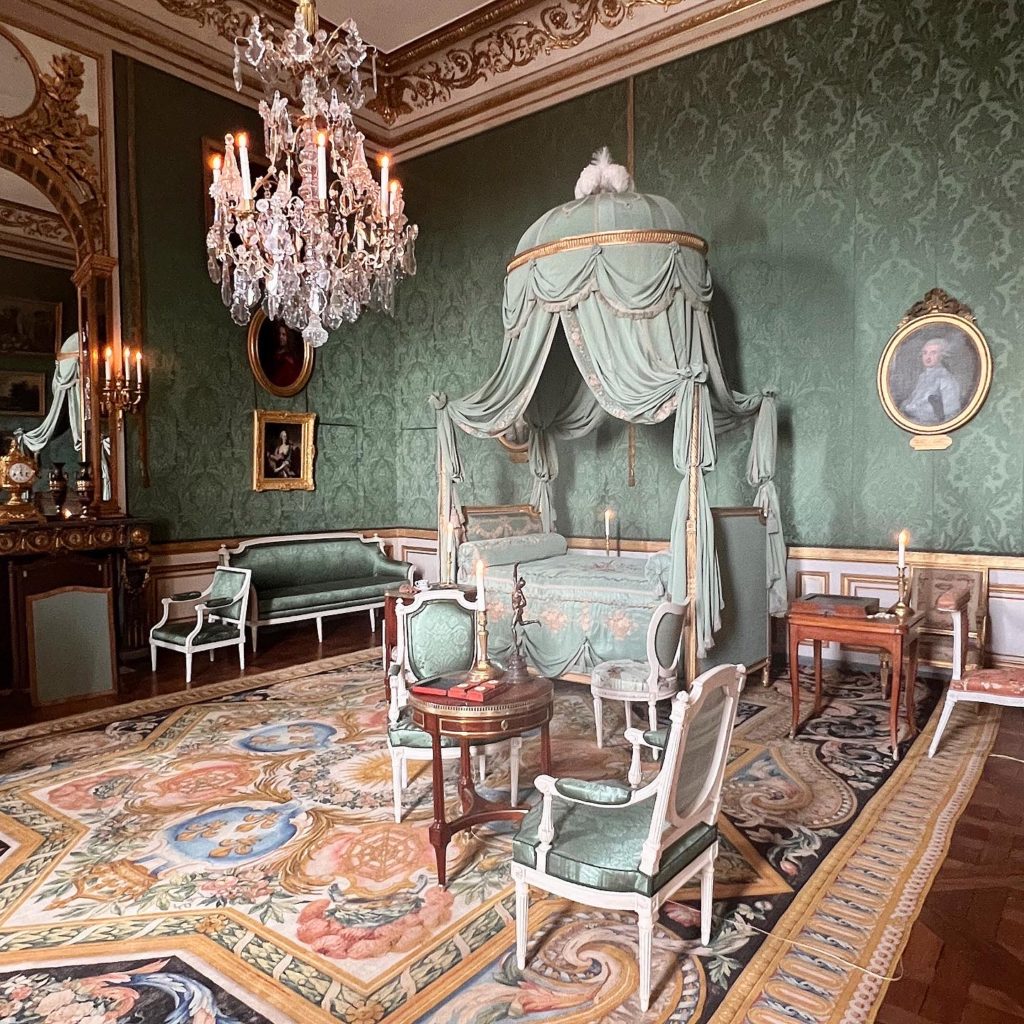
If you want to see more Rococo style, the collections of the Musées Nissim de Camondo and Cognacq-Jay will also have you swooning.
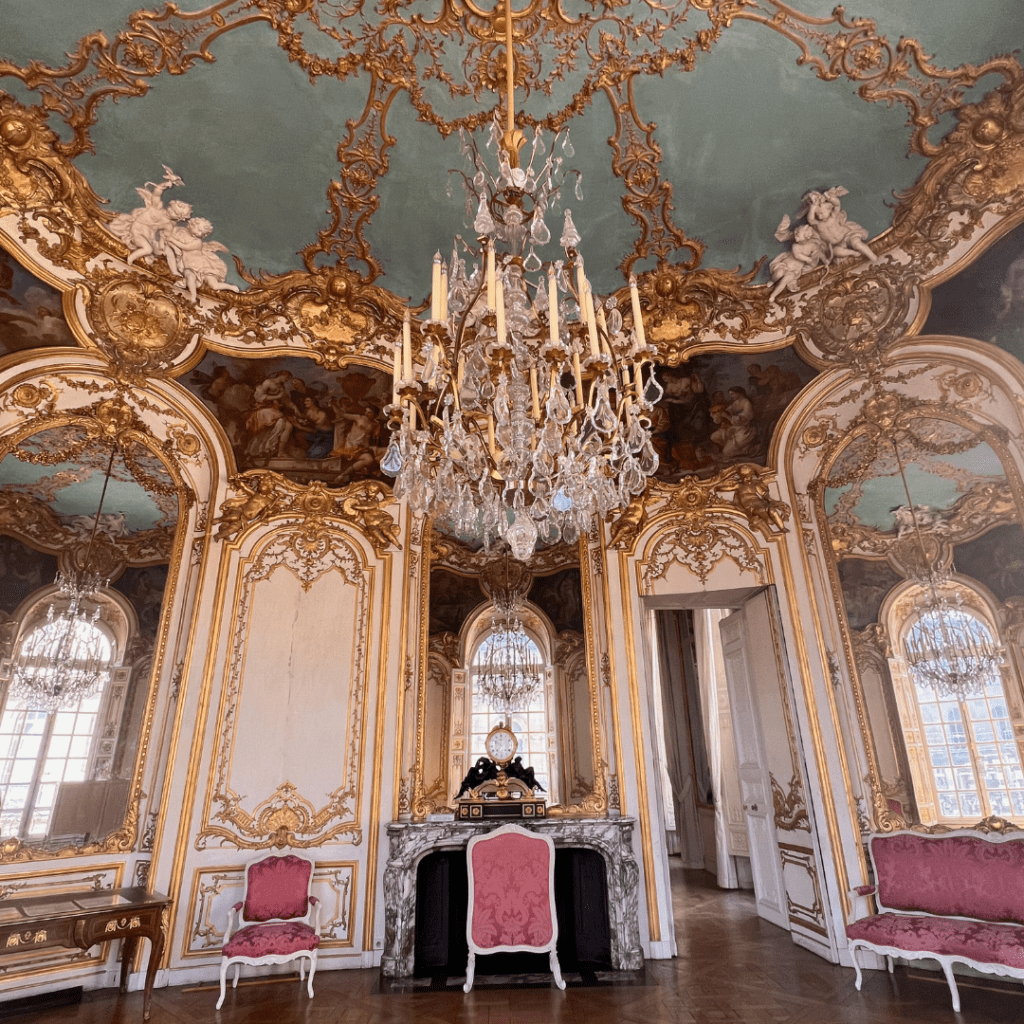
And don’t miss a visit to the Musée Carnavalet, which boasts some divine rooms from the 1700s, recreated in all their gilded and panelled glory; nor to the Archives Nationales, where some of the rooms date from the building’s life as the sumptuous Hôtel de Soubise (above), and are so gorgeous they need to be seen to be believed.
Hôtel de Sully
Walk through the arched entrance at 62 Rue Saint-Antoine and you’ll find yourself in the cobbled courtyard of the Hôtel de Sully, a seventeenth-century hôtel particular (private townhouse).
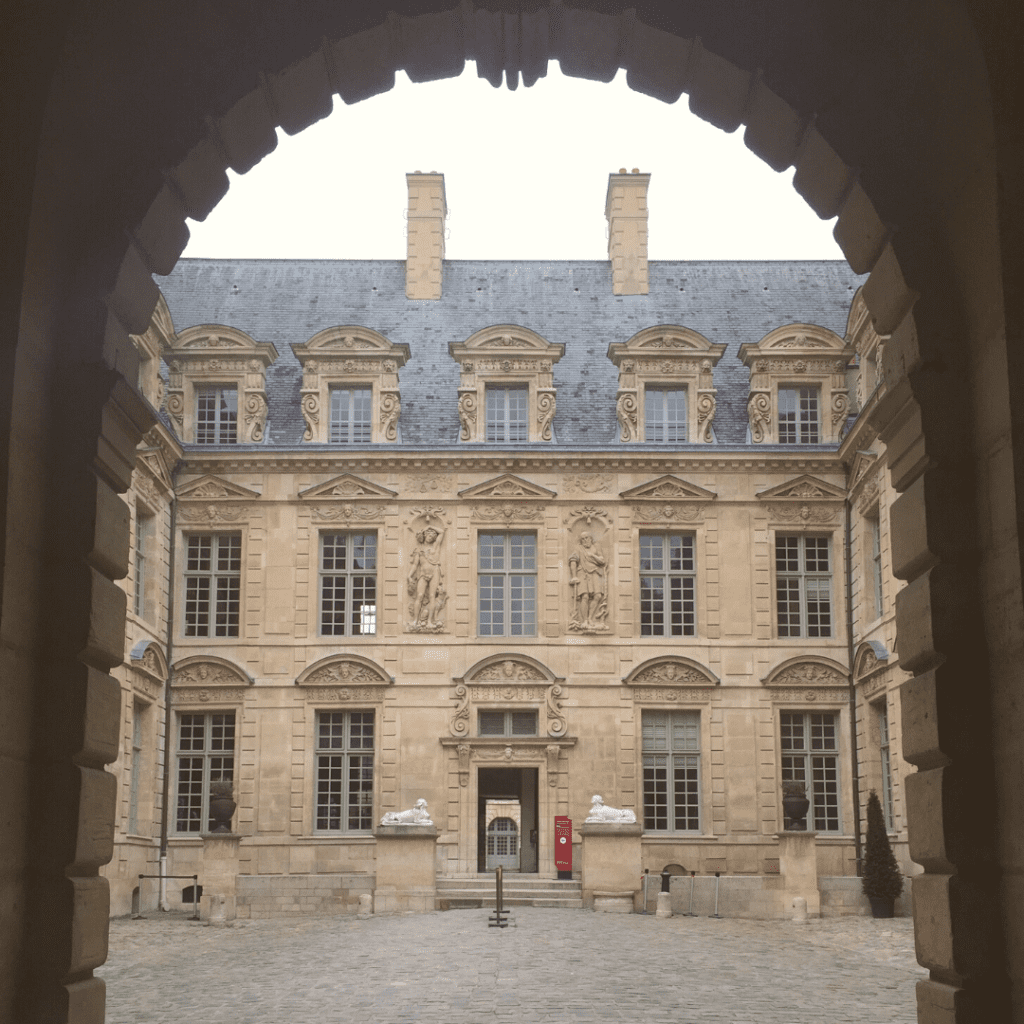
This doubled as the Marquise’s courtyard in the 1988 film:
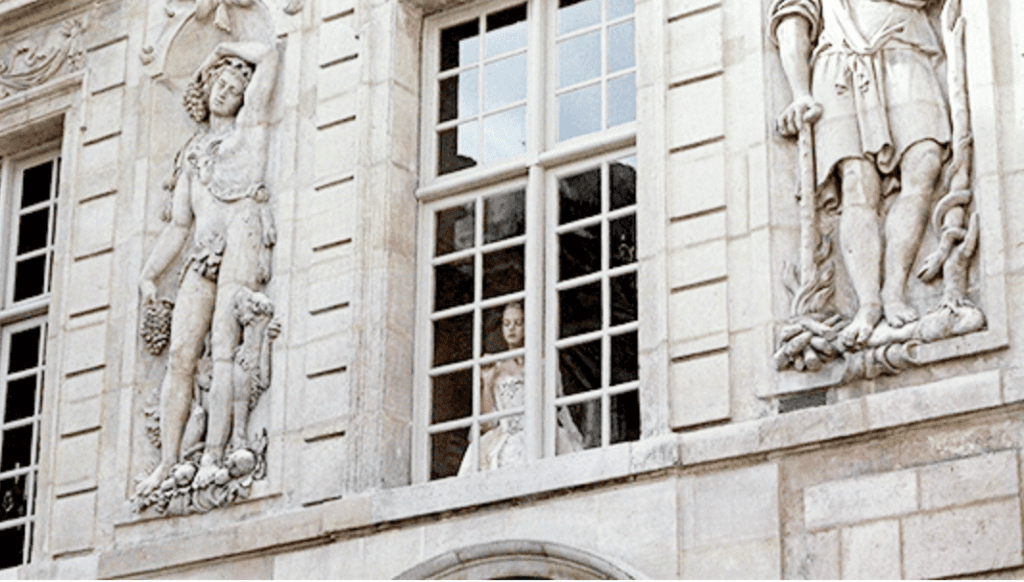
Walk through the former townhouse (there’s a great bookstore to your left that you might want to stop at) and you’ll reach its lovely garden, complete with original orangerie.
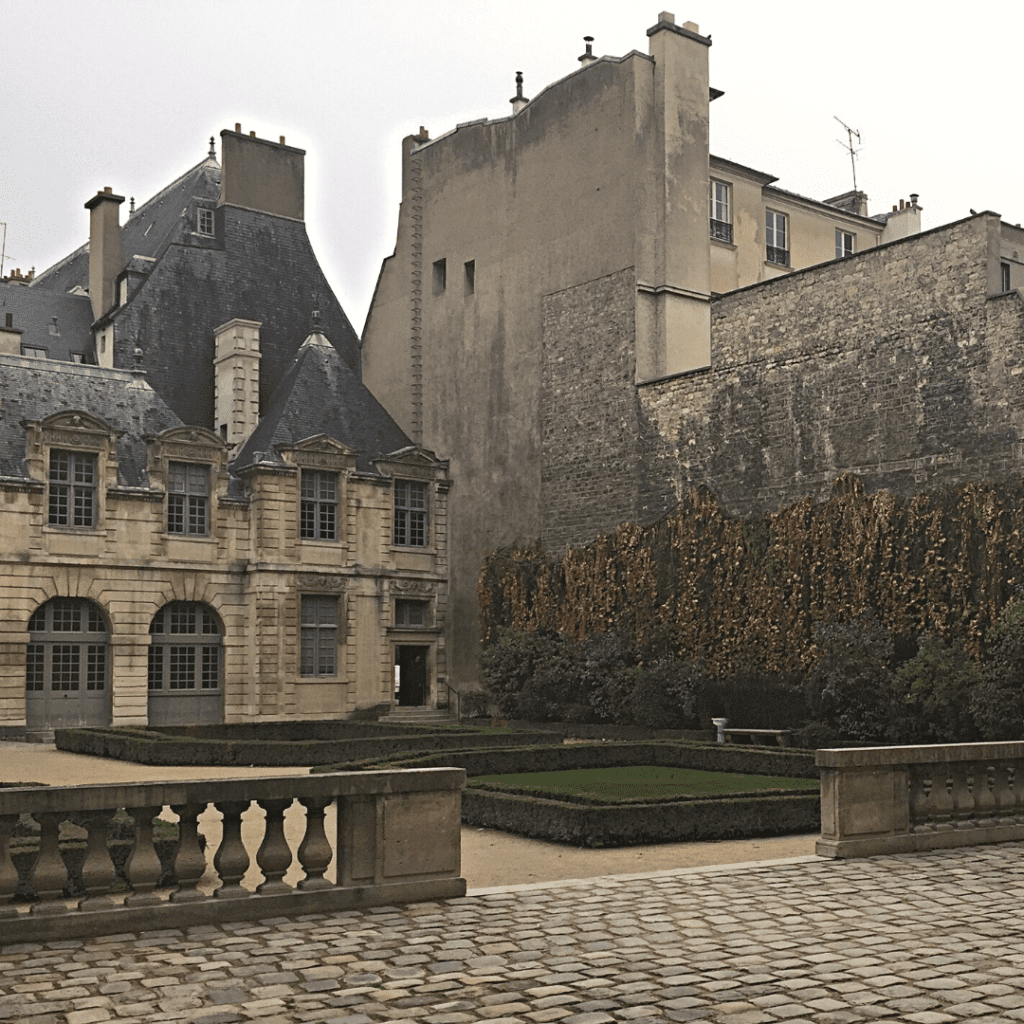
Just to the right of this orangery you’ll see a storybook-looking doorway — this takes you to Place des Vosges. Walk north along the western arcade (below), and you’ll be following in the footsteps of the real-life inspiration for Valmont, who lived for a while at 21-23 Place des Vosges.
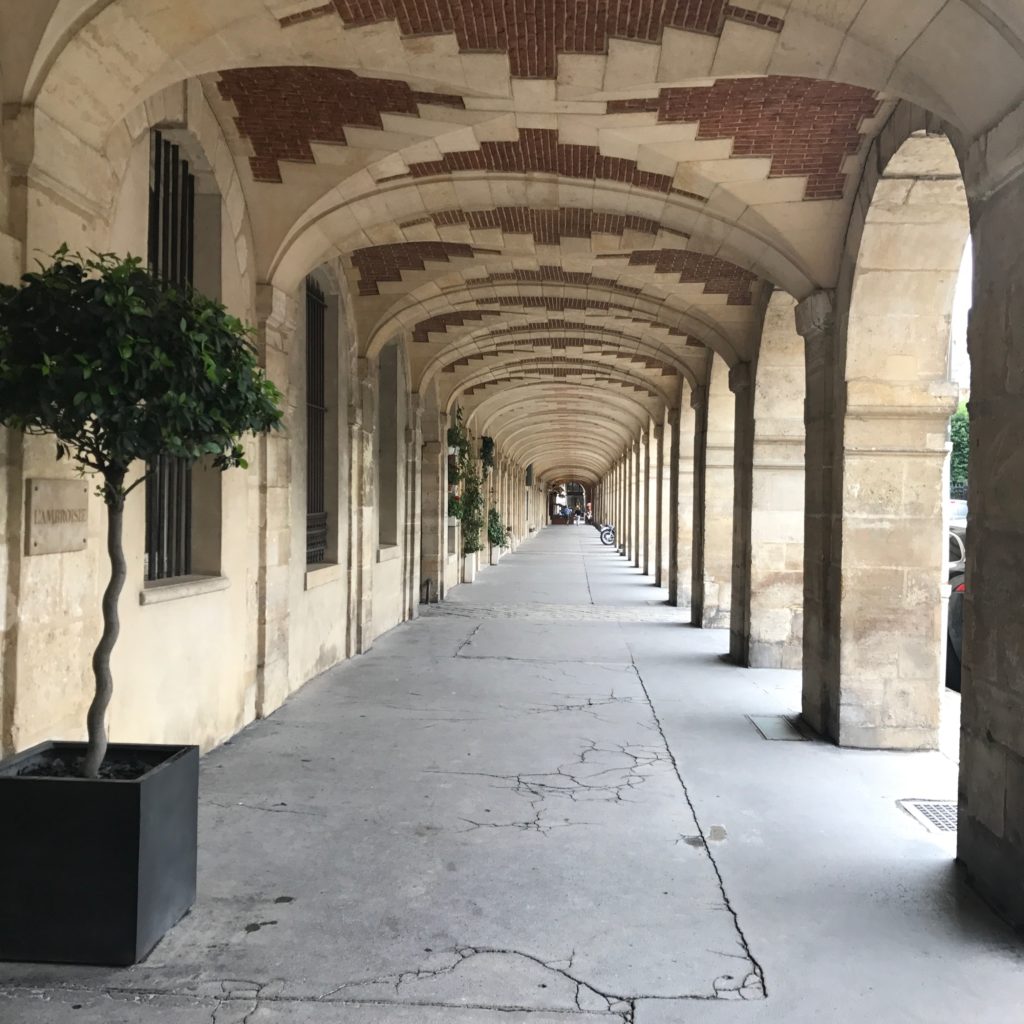
A little more history to wrap up today’s tour … Our real-life Valmont was Louis-François-Armand de Vignerot du Plessis de Richelieu, who officially became the Duc de Richelieu in 1715.

He was a soldier of much prowess, and his success during the Battle of Mahon inspired his chef to concoct mayonnaise in commemoration. But his saucier legacy was surely the character of Valmont, for the duke was a womaniser of the first order. As the First Gentleman of the Bedchamber, he helped manage the King Louis XV’s various liaisons, without neglecting his own boudoir. His devious seduction strategies included dressing as a chambermaid and lurking in underground passages, which would very much be signature Valmont moves. He enjoyed a succession of affairs with Paris’s most fascinating women of the times (including mathematician Émilie du Châtelet), and two Parisiennes even fought a duel over him. The duke was still going strong at 84, when he married his third wife. But the marriage only lasted four years, with the duke passing away several months before the beginning of the French revolution. Like Valmont, perhaps he knew when the gig was up.

